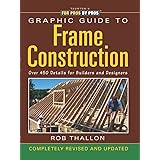Do you remember those days of elaborate hide-and-seek games, where every shadow held a potential adversary, and every whispered word might be a secret code? The thrill of cracking a mystery, even if it was just about who took the last cookie, was unmatched. It seems that innate desire for intrigue and adventure never truly leaves us, which is why the video above, showcasing some truly ingenious **DIY spy gadgets**, resonates so strongly.
Creating your own spy kit from everyday items transforms mundane tasks into exciting missions. The allure of being a secret agent, equipped with homemade tools, is not merely for children; it is often found to be a delightful escape for adults too. However, the true fun lies in the ingenuity of these simple yet effective contraptions.
Cracking the Code: Crafting Your Own Decoder Wheel
The first step in any good espionage adventure frequently involves deciphering secret messages. While complex algorithms are often employed in high-stakes operations, the foundation of cryptography can be explored with a simple, handmade decoder wheel. In the video, a basic rotating cipher disk is demonstrated, offering a practical way to encrypt and decrypt messages.
A decoder wheel, at its core, operates on principles similar to a Caesar cipher, where each letter in the plaintext is shifted a certain number of places down or up the alphabet. For a DIY spy kit, this involves two concentric circles of paper or cardboard. The outer wheel typically has the standard alphabet, while the inner wheel has a shifted alphabet. By aligning a known letter (like ‘A’ to ‘A’ as shown in the video) and then shifting it a set number of positions (e.g., seven positions), a unique cipher key is created. This key then allows for the substitution of original letters with their coded counterparts. The beauty of this method is its simplicity; secret messages can easily be created and read by anyone possessing the corresponding decoder wheel and knowing the shift value. Such a gadget enables thrilling secret communications between friends, perfect for passing notes undetected.
Unmasking Secrets: Mastering Fingerprint Lifting
Every seasoned detective or spy knows the importance of evidence, and fingerprints are often considered the holy grail. The video reveals a surprisingly effective method for lifting fingerprints using common household items. While it may seem like something out of a detective novel, the technique is quite accessible.
The science behind lifting fingerprints with powder is rather straightforward. Our fingertips naturally leave behind a residue of oils and sweat. When fine powder, such as talcum powder or baby powder, is gently brushed over a surface, these tiny particles adhere to the oils and moisture in the fingerprint, making the print visible. The powder effectively ‘highlights’ the ridges and valleys of the print, transforming an invisible mark into a discernible pattern. A common adhesive tape is then pressed firmly over the powdered print and carefully lifted, effectively transferring the print onto the tape. This method is surprisingly effective, as demonstrated in the video.
The Ethics and Practicality of Fingerprint Recognition
While lifting fingerprints can be a fun activity for a **DIY spy kit**, its real-world implications, particularly concerning security, are significant. It was mentioned in the video that about “75% of the finger for this to actually work,” a detail reportedly found on Apple’s website regarding Touch ID technology. This suggests that biometric scanners, while advanced, do not necessarily require a complete, perfect print to function. A substantial portion of a print, if accurately reproduced, could potentially be recognized. However, it should be stated that using lifted fingerprints to access someone’s personal device without their permission is illegal and unethical. The knowledge of how fingerprints can be lifted is best used for educational purposes or simulated mystery-solving, not for illicit activities. Responsibility in understanding such techniques is paramount; they are meant for imaginative play, not for breaching privacy.
Enhanced Surveillance: DIY Rear-View Spy Sunglasses
The concept of seeing without being seen, or gaining an advantage in observation, is central to the spy archetype. The video demonstrates how ordinary sunglasses can be transformed into ‘rear-view’ spy glasses, allowing the wearer to subtly observe what is happening behind them. This clever modification is achieved by affixing small pieces of reflective material, often referred to as mirror paper, to the inner sides of the sunglass frames.
The principle at play here is basic optics: reflection. Small mirrors strategically placed at an angle within the frames reflect light coming from behind the wearer into their peripheral vision. This creates a subtle image of the rear environment, allowing for discreet observation. The host demonstrates how effectively one’s ‘blind spot’ can be minimized with these DIY spy glasses, making them a fun and practical addition to any aspiring agent’s gear. Moreover, obtaining “reflective paper online” is incredibly cost-effective, with prices around “50 cents,” making this an accessible project for anyone. While these glasses are undeniably cool, caution is advised, as the video host humorously notes, driving with such augmented vision could be dangerously distracting.
Peering Around Corners: Building a DIY Periscope
Another classic spy gadget, the periscope, is also tackled in the video. Periscopes allow for observation from a concealed or obstructed position, enabling users to see over walls, around corners, or from below the water’s surface (in more advanced designs). The DIY version utilizes a simple box-like structure and mirrors.
A basic periscope works through a series of reflections. Two mirrors are placed parallel to each other at opposing ends of a tube or box, angled at 45 degrees. Light from the object being viewed strikes the top mirror, is reflected down the tube to the bottom mirror, and then reflected into the observer’s eye. This simple arrangement allows light to “bend” around obstacles. The video shows the construction of a scaled-up periscope from a printed template, highlighting the adaptability of the design. This gadget is perfect for observing pets, scouting out play areas, or simply satisfying curiosity without having to move from a hidden spot. The construction emphasizes creativity and problem-solving, turning a flat template into a functional observation device. It transforms the act of ‘looking’ into an engaging, multi-dimensional experience, almost like looking through a portal to another perspective.
These **DIY spy gadgets** demonstrate that the spirit of espionage and discovery is truly within reach for anyone with a bit of creativity and common household items. The thrill of creating and using these homemade tools adds a layer of adventure to everyday life, proving that even the simplest materials can unlock a world of imaginative play.











